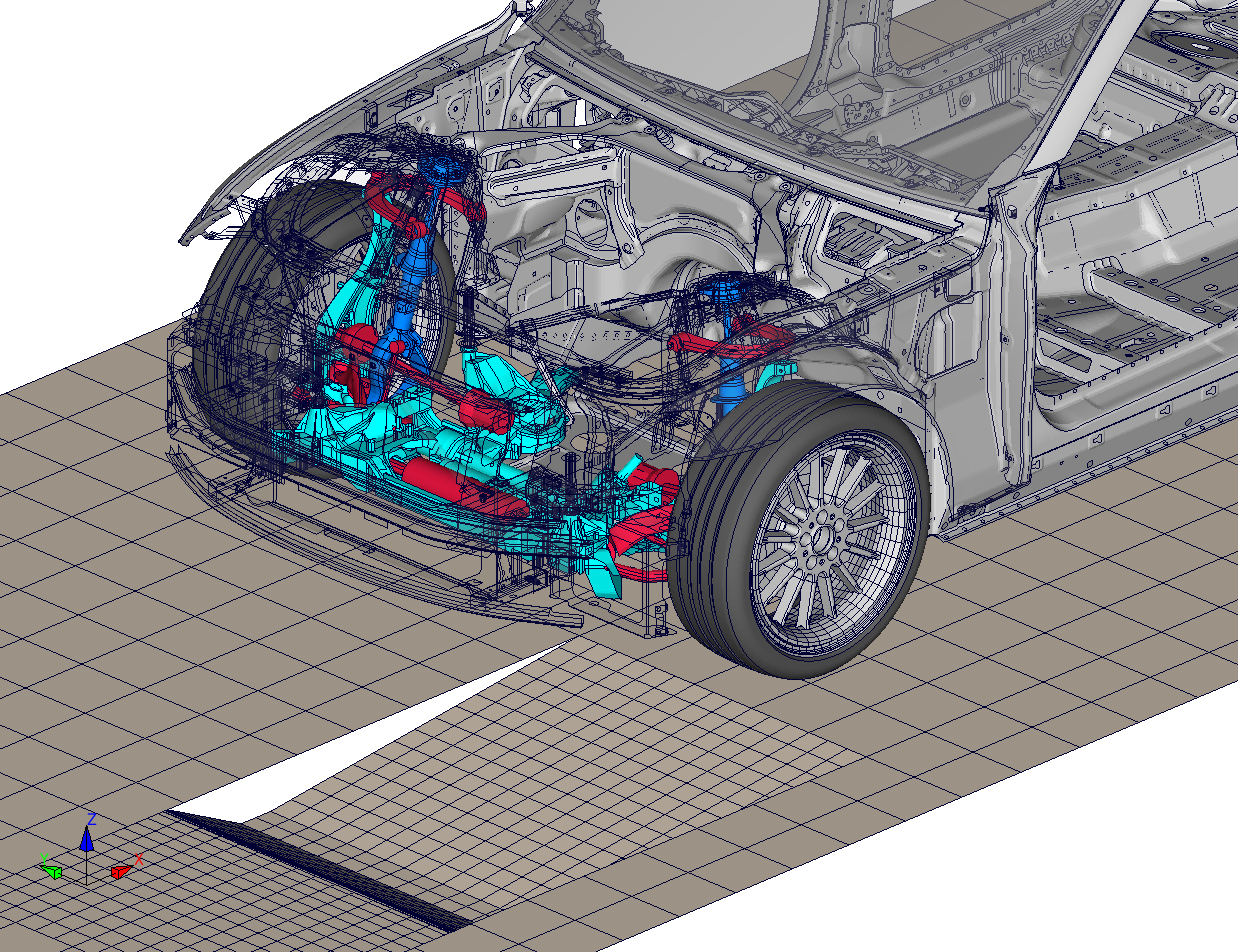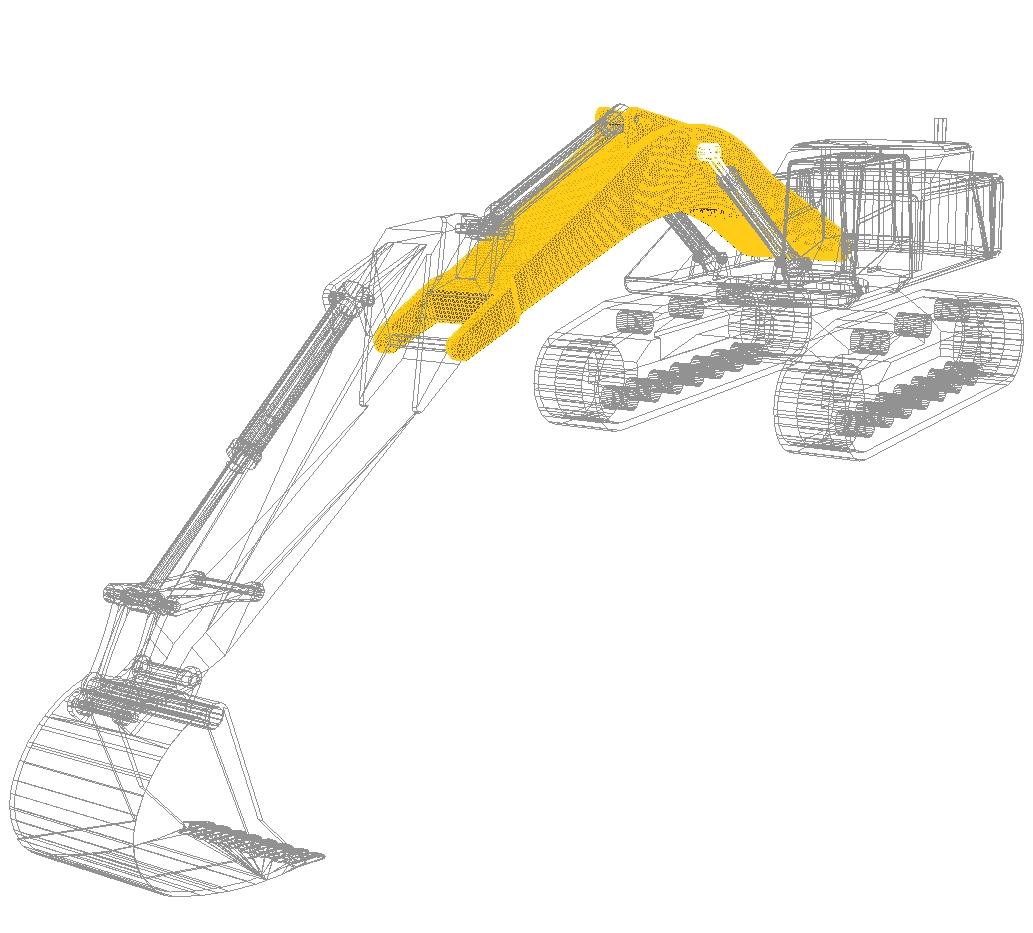Multibody Simulations (MBS) and Finite Element Methods (FEM) are very effective tools to simulate the complex dynamics of vehicle and machine parts. Cosimulation is a natural means to increase the fidelity of these models to include environmental influences and additional physical phenomena such as fluid flow or electromagnetics. In addition, the simulation time for complex finite element models can drastically be reduced by using Multibody Simulations for noncritical components.
Vehicle and Machine Dynamics
Tabbed contents
Reference Applications
Driving over Obstacles
A common load case in vehicle dynamics is driving over barriers or cross-drains. Most OEMs today use detailed Finite Element Models for these cases. The computational cost for such a simulation can be reduced by simulating all noncritical components using Multibody Dynamics software while using a Finite Element Analysis for critical components such as tires and the suspension system.
Wading Simulation for Off-Road-Cars
Wading through deep water causes drag, decreases ground traction and changes the overall dynamic behavior of the tire suspension system. Coupled MBS and CFD simulations can help to gain an in-depth understanding of these phenomena and support the virtual product development for off-road vehicles.
Ground Vehicle Interaction
The dynamics of construction and agricultural machinery is highly influenced by the interaction with the ground. Standard FEM models to handle complex ground models and large tire deformations are either insufficient or computationally too expensive. We are currently evaluating alternative methods and solutions to be combined with standard FEM and MBS in a single application.
MpCCI Methods
Features for Vehicle Dynamics Applications
- Different coupling schemes for transient explicit and implicit solvers, as well as static simulations
- Quasi-iterative coupling in the MBS adapter for increased stability
- Point and Surface coupling supported for most codes
Realization of new Methods and Solutions within R&D Projects
Working in close contact with our customers gives us the opportunity to constantly improve MpCCI based on the user’s needs. At the same time, we can offer our expertise and experience when it comes to setting up cosimulated models in your department.
We are keen on working together in strategic projects
- to enhance the accuracy and stability of mechanical coupling
- to extend the portfolio of tools and supported simulation codes
- to identity new application areas that could benefit from cosimulation
Software and Services
Service Offer
Apart from providing a ready-to-use software for cosimulation, we offer
- Integration of commercial or inhouse codes into the MpCCI tools
- Integration of MpCCI tools into customer’s CAE workflow
- Adjusting MpCCI to customer’s specific requirements
- an API to implement code adapters for your in-house code
- assistance for developing adapters for codes that are not supported yet
- support in getting a stable and accurate cosimulation running for your application
MpCCI CouplingEnvironment
The MpCCI CouplingEnvironment offers flexible solutions for multiphysical simulations. The combinable simulation codes for this application area are shown in the following table:
Discipline |
Codes |
|---|---|
Multibody |
|
Structure |
|
System |
|
Fluid |
|
Ground Vehicle interaction |
|
The supported quantities in this context are:
Quantities |
|
|---|---|
Mechanical |
|


